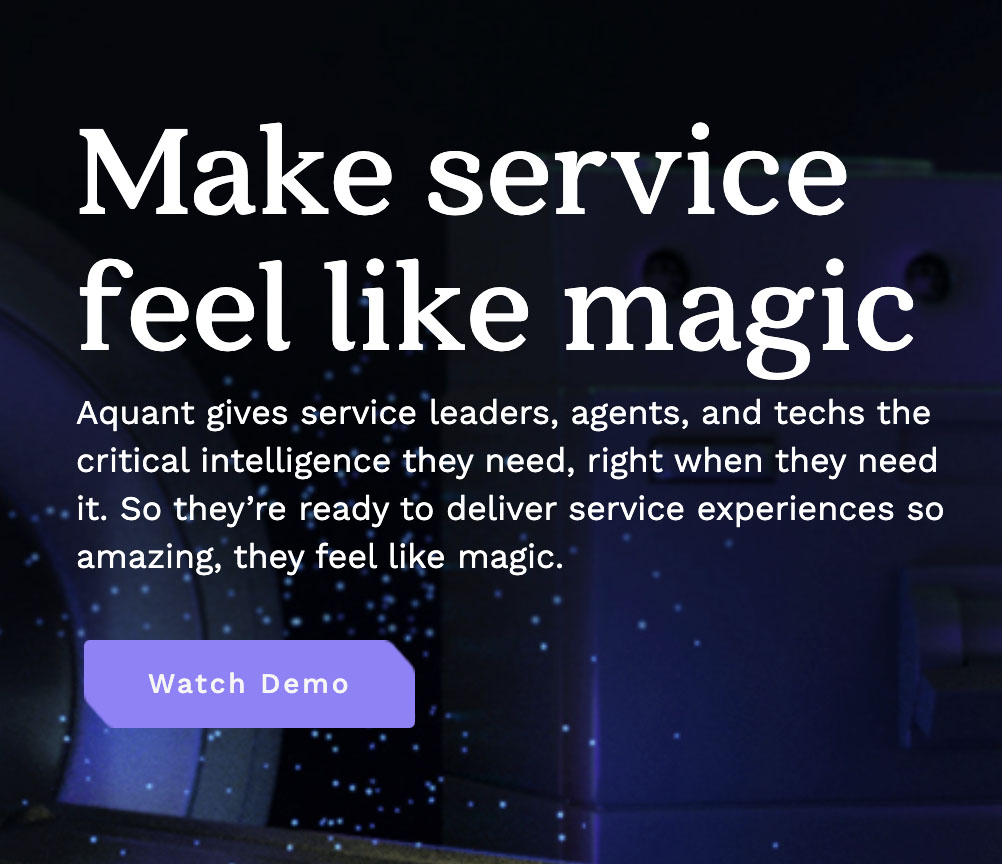Here’s What Your Average KPI Numbers Aren’t Telling You
Relying solely on average service KPIs may be risky for service organizations, since they do not really capture the overall customer experience. In this new article from Aquant, leading Service Intelligence Platform, we discuss why it pays to have a bird’s eye view of your service landscape.
At some point in time, most service organizations will receive a complaint that they likely weren’t aware of. But whether the call was the result of compounded dissatisfaction or related to a specific incident, there are ways to prevent customer escalations before a complaint arises—and it starts with taking a close look at your performance trackers.
Your org may be using a variety of data points, including KPIs like First Time Fix Rate, Cost Per Success and Net Promoter Score, to measure the success of your products, services, and processes. But relying solely on average service KPIs can be risky: they don’t fully measure the total customer experience.
KPIs and NPS are not always what they seem, especially if you don’t have a complete look at your service landscape. It is helpful to think beyond basic First Time Fix Rate (FTFR), Cost Per Success (CPS), Mean Time to Resolution (MTTR), and Mean Time Between Fixes (MTBF) rates when looking to get an accurate snapshot of your service performance and costs.
We can’t begin to understand how to proactively improve service performance unless we have an excellent understanding of the landscape as a whole — including everything from specific field tech performance to machine usage and breakdown rates. It all starts with establishing baseline measurements, or snapshots of your service habits and outcomes as they stand.
To form these measurements, you need to take a close look at your organization’s data, sifting through a large pool of numbers to spot hidden patterns—including areas of celebration or concern. This type of assessment can help you set priorities, determine which practices you want to keep or improve, and get you into the practice of keeping tabs on your KPIs.
When you take an in-depth look at your KPIs, you begin to spot other factors that may look like your customer is happy when they actually aren’t. For instance, imagine that one of your all-star techs retires. They have been servicing an important account for years, and KPIs indicate A+ service. A less-seasoned technician inherits the account, but due to a lack of experience, the KPIs have started dwindling and the client calls with a complaint. When you go on to review the 12-month average, you can’t pinpoint exactly where the issue is because the data is now skewed. This is where it becomes important to look at trends across the entire service period—including the time that your new tech took over—so that you can brainstorm solutions to get your account up to speed (additional training, reassignment, etc.)
“If customer focus is not at the forefront of our business on a daily basis, we put ourselves at risk of losing and jeopardizing relationships with them,” said Sidney Lara, Aquant’s resident service expert, in a recent session, 3 Ways to Win Customer Loyalty and Avoid Service Disasters. “It’s all about allowing service leaders to be quicker about identifying issues in the field and quicker about maximizing retention and customer satisfaction.”
Improve Indicators That Aren’t Performing Well
Take the Next Steps to Greatness
Do you know where your company’s current practices stand in comparison to its peers?
Find out how your service performance stacks up by taking our quick service assessment. Get actionable tips based on your results to reduce service costs, boost your CX, and become one of the top 20% of service organizations.
Further Reading:
- Read more about Digital Transformation
- Read more about Service Operations
- Read more about Aquant on Field Service News
- Find out more about Aquant
- Follow Aquant on Twitter
- Access 39 premium resources on Digital Transformation
- Access 24 premium resources on selecting and implementing Field Service Technology




